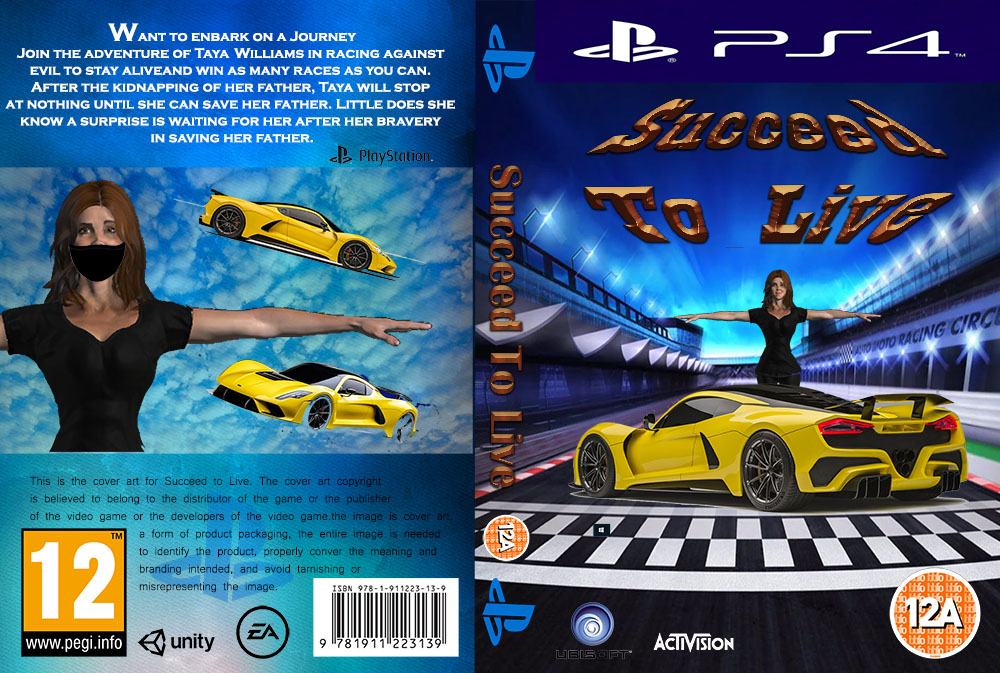
Nea: shampoo 2


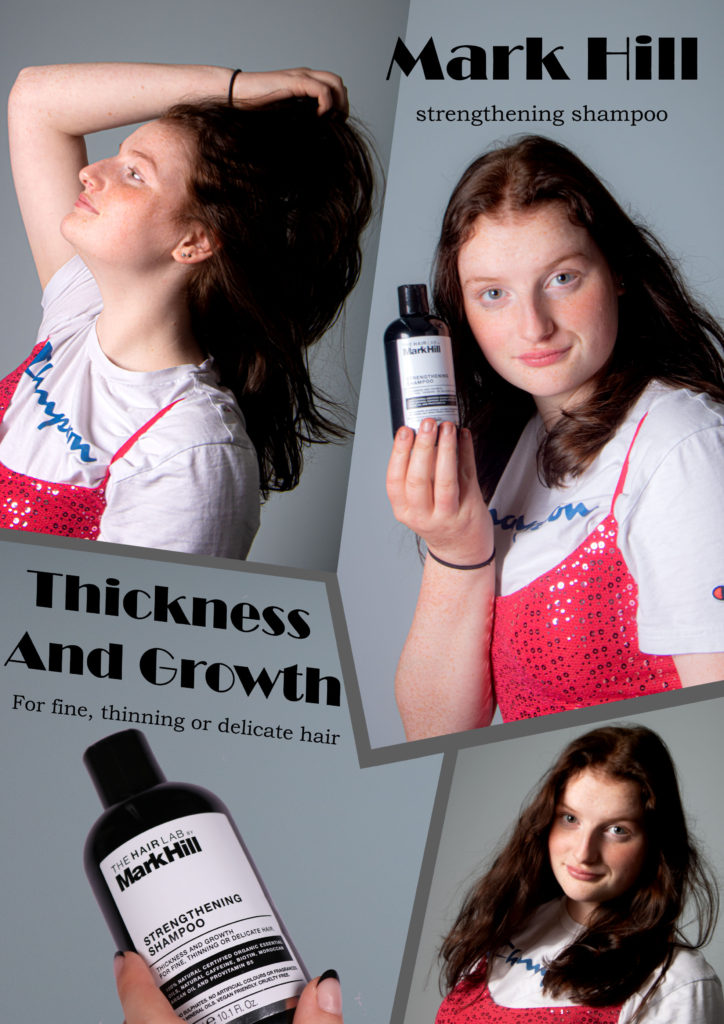
I would like to advertise my product on focusing on the product itself and also involving images of hair so that it could be an example and a demonstration of what will be shown on the advert. I would like my image of the product to be very clear and readable as I would like to see the product itself. I would also like if I could have a model as it would indicate what the product is used for.
For my advert I would like to create it with my own imagination and try to experiment with all sorts of techniques. I would like to make it vivid but not with extreme colours. There will be 3 different images of my style model who will have different poses to demonstrate how my product makes them feel. I don’t want to add a lot of information as the audience prefer more visionary pictures rather than wordy images. I am still not very confident with the final colours that I will be using, however I think I will just experiment with all the colours that go well with he image. The aim I have with my image is to attract the audience to look at my style model because then the audience will gain the impression that they will look like them. Therefore, my first advert will be something to experiment with and make the audience believe that the product could change their lives.
For my second advert I would like to follow the example of some other adverts, but adding my own ideas instead. I think I will have my style model being the main image with the product at the bottom of the corner or at the side. There will be a heading and a slogan on the image as the product will stay on their mind. I would like this image to be very creative and radical. This is because then the icon of the image will look realistic. Ferdinand de Saussure helps us realise that the signified will stand out and it will imply to the audience what I am trying to attract.
My product will be the dominant signifier as it will be the main image of the front cover of the article. Additionally, my product will also be anchorage as my product is shampoo and will need context in whom it is aimed for. For my product their will be an index symbol as their will be a model that will relate to the product. Therefore, my product will be reactionary and less of radical. Roland Barthes gives us the knowledge to create the advert we want to make to look in a certain way. However, I would like to add more radical ideas.
This product will be targeting women as varies of women struggle with hair products and I will like to portrait how my product is better and it will give a boost of confidence towards them. This is also known as the aspirer as women will feel motivated by esteem and status needs. This could also explain how giving the positive and negative stereotypes to give the impression of how they feel towards the product. I would also like to add the mainstreamer to motivate the audience that it is something they need that should belong to them. The reason for giving both adverts the sense of fluidity identity is because I would like to give the ability for the audience to see how they could change themselves. Overall, I would like my audience not to feel lied to and believe what they see and what it does.

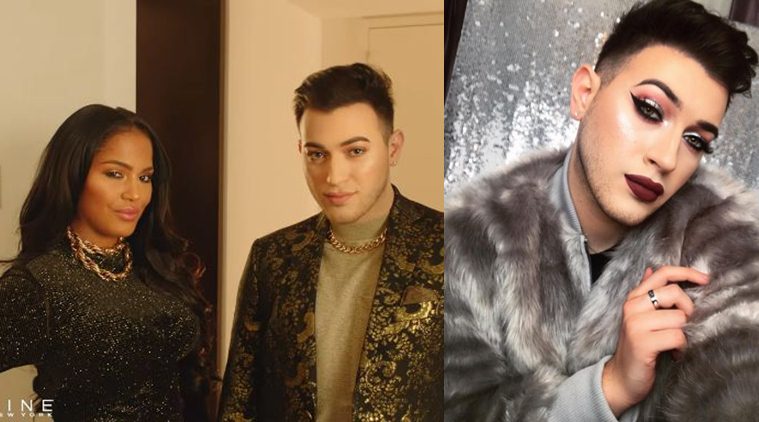
Popular cosmetics brand Maybelline has broken boundaries by choosing a male model as a face of their brand. ‘Tall, white and skinny’ was the description that would fit most models. Now pushing the frontiers further, a gay YouTube star has become the first male model for international cosmetic giant Maybelline.
The video ad touches on issues of gender representation, ethnicity and lifestyle. The ad, like its 1960s counterpart, uses an aspirational image showing two friends who do not conform to masculine and feminine ideals but are nonetheless powerful: happy in their own skin, confident in their bodies and their sexuality.
Both emphasise how important it is to be comfortable with yourself and ‘live like a boss’, a positive mantra that is already well used and ingrained in everyday vernacular, especially with the younger generation. The whole campaign is youthful and empowering. Slogans like ‘let’s get bossed out’.
In 2017 they teamed up with beauty influencers for the first time, this also marks Maybelline’s first-ever partnership with a man as the star of a campaign, called Manny Gutierrez. After the recent demise of gay icon George Michael, several gay men had paid tribute to the singer recalling how he was a huge inspiration when they were growing up and helped make their coming out easier.
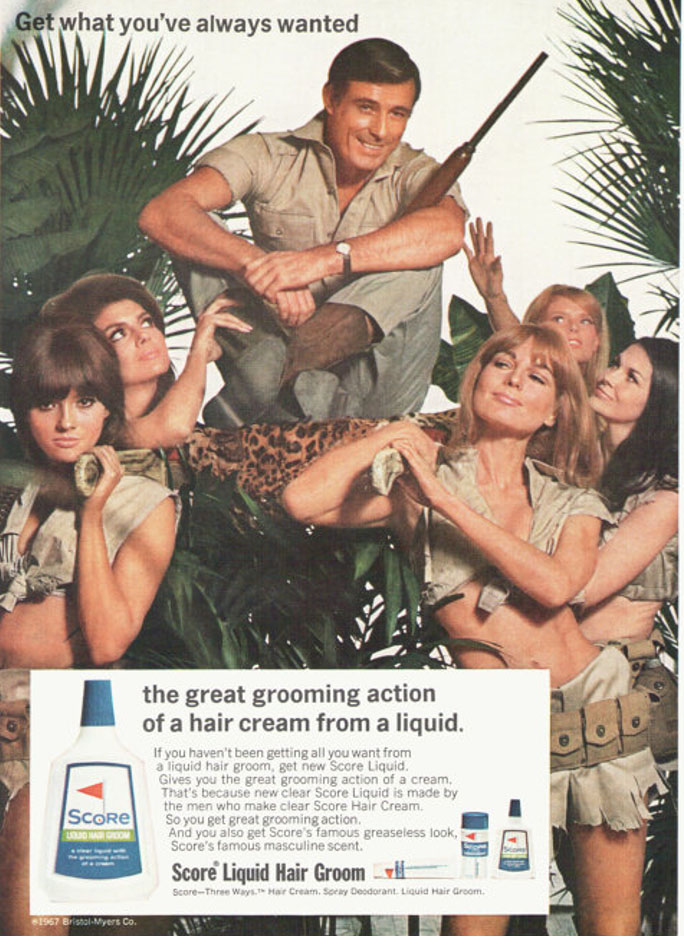
Mise-en-scene analysis- It considers its historical, social and cultural contexts, as it relates to gender roles, sexuality and the historical context of advertising techniques. There are women and one man to suggest that you will get all the females if you buy the product. They also use a lot of words that are repeatedly repeating itself.
Semiotics – I believe they use a mixture of indexical symbols as it relates to a jungle as they are dressed in safari clothing and there is a platform where the material is a leopard which could suggest they are in a forest as they also have the bushes or trees behind them as there background.
Representational analysis – In 1967 the picture could identify that this period of slow transformation in western cultures with legislation about and changing attitudes to the role of women – and men – in society, something that the advert can be seen to negotiate. The Score advert was produced in the year of decriminalisation of homosexuality and as such, the representation of heterosexuality could be read as signalling more anxiety than might first appear. The reference to colonialist values can also be linked to social and cultural contexts of the ending of Empire.
Narrative – The three women at the back suggest that the man are getting their attention from them and the 2 women at the front suggest that they could be showing off on their looks and how lucky the man is which could also explain that the advert is sexualising them. The woman starring into the camera illustrates how she could be saying to the men buy this product and you will get all this.
Audience- It creates the desire for this product as it challenges the product ideas as it is trying to influence men that if they were to buy the product they will get all they want. The brand message for this product is the great grooming action of a hair cream from liquid. This doesn’t imply anything to us, so therefore this doesn’t tell anything about the product. The audience responses to the narrative because it influences and manipulates the men into something different.
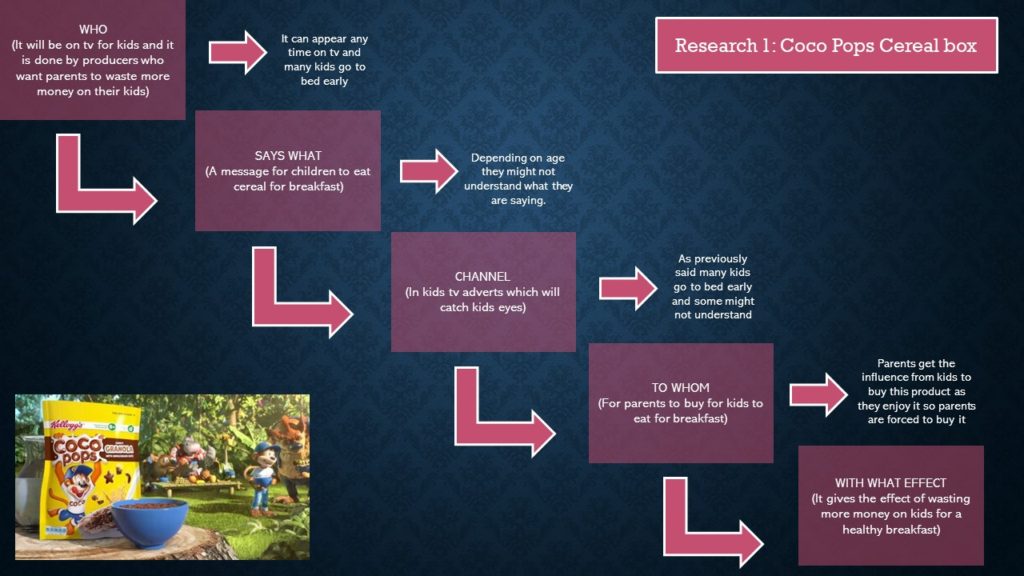
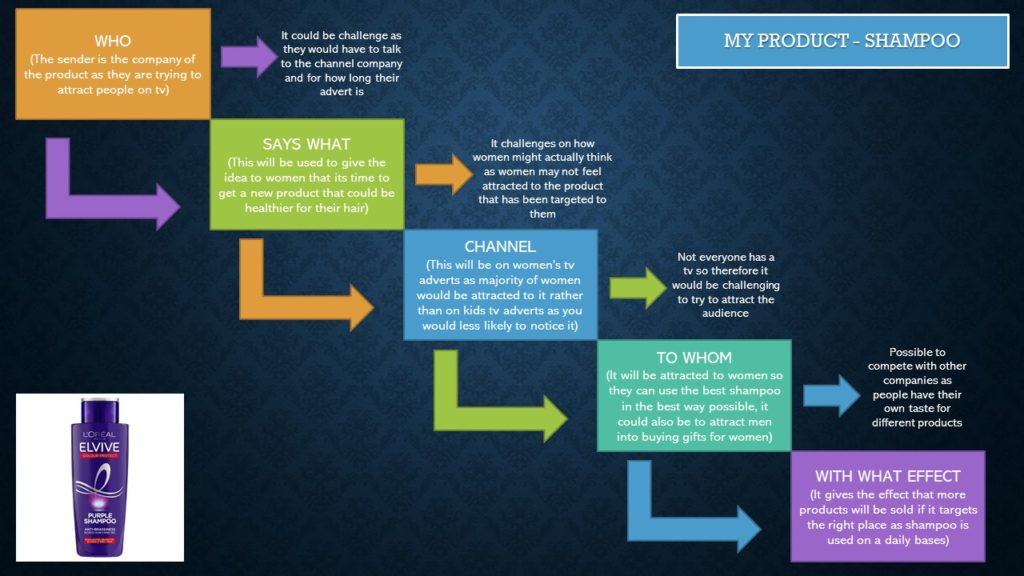
Quantitative Data Audience Research 1: Cereal box
The quantitative data for this product is the age that it is to be targeted, as it targets the age group 4 to 12, however it doesn’t mean that others can’t buy the product as it could influence all age groups.
Quantitative Data Audience Research 2: Starbucks
The quantitative data from this product is the times that it opens so that people know when the product is available to get.
Another quantitative data research is the cost of the product as it is important to have the knowledge of it as the quantity of the cup is.
Quantitative Data Audience Research 3: My product
The price of the product will be ideal so people would understand the worth of the product and to know exactly how much they would be wasting.
It also depends on the social grade as the higher and intermediate managerial it is the higher chance that you would be earning more if all the facts of the product are truthful.
It will be targeted to all of the female population as it is a female product. There is about 49.6% females in the world so therefore it will be targeted to those.
Qualitative Data Audience Research 1:
The resigned – motivated by survival needs & The explorer – motivated by the need of discovery.
Qualitative Data Audience Research 2:
The resigned – motivated by survival needs & The explorer – motivated by the need of discovery & The reformer – motivated by enlightenment needs.
Qualitative Data Audience Research 3:
The aspire – motivated by esteem/status needs & The mainstreamer – motivated by belonging needs.
| Research product 1 (Coco Pops Cereal box) | Research product 2 (Starbucks) | My product (Shampoo) | |
| Understanding self | It briefly explains the idea of the product and who it targets. | It gives a clear gesture on what it is trying to imply as it shows an image of the product that they are trying to advertise. | It gives a clear information about the product and how good of a product it can be. |
| Enjoyment | It is mainly enjoyed by young kids as it has many cartoon characters. | It gives a positive note on the enjoyment that it can give you. | There will be enjoyment as there will be a catchphrase that will be intriguing for the people. |
| Escapism | It definitely uses escapism as it doesn’t involve anything natural and its more creative and colourful and very playful. | It definitely does not note on escapism as it is more direct to the natural world. | It won’t be to much of an escapism advertisement as I don’t want the reality of the product to fade away as Being more realistic could potentially sell more. |
| Knowledge about the world | This doesn’t give to much information about the knowledge about the world as it is very much cartoon like. | The Starbucks ad suggests how you could enjoy your life with a little bit of Starbucks to help others to also enjoy the taste of Starbucks. | This relates to the knoweldge of the world as people could be depending on which products are best to use so therefore people could get acknowledge about these products. |
| Self confidence, Self esteem | This doesn’t really show to much about self confidence however, it could possibly suggest that kids will gain an impact with the product. | Starbucks gives a positive energy so I believe that it could powerup peoples self esteem for the day. | This will give a self confidence to people in daily life as shampoo is used on a daily. |
| Strengthen connections with family and/or friends | This doesn’t strengthen the connection between family or friends as the advertisement only reaches out to children. | This also could be in between as the product shows gaining connections but it doesn’t necessarily mean that it will happen. | This doesn’t strength any connection apart from using it in on a daily. |
| Any other category or theme | As it targets kids, parents could possibly enjoy eating cereal for breakfast. | Starbucks influences everyone, so therefore it would be ideal for a product to be made. | It will smell really nice and everyone loves strong scents. |
